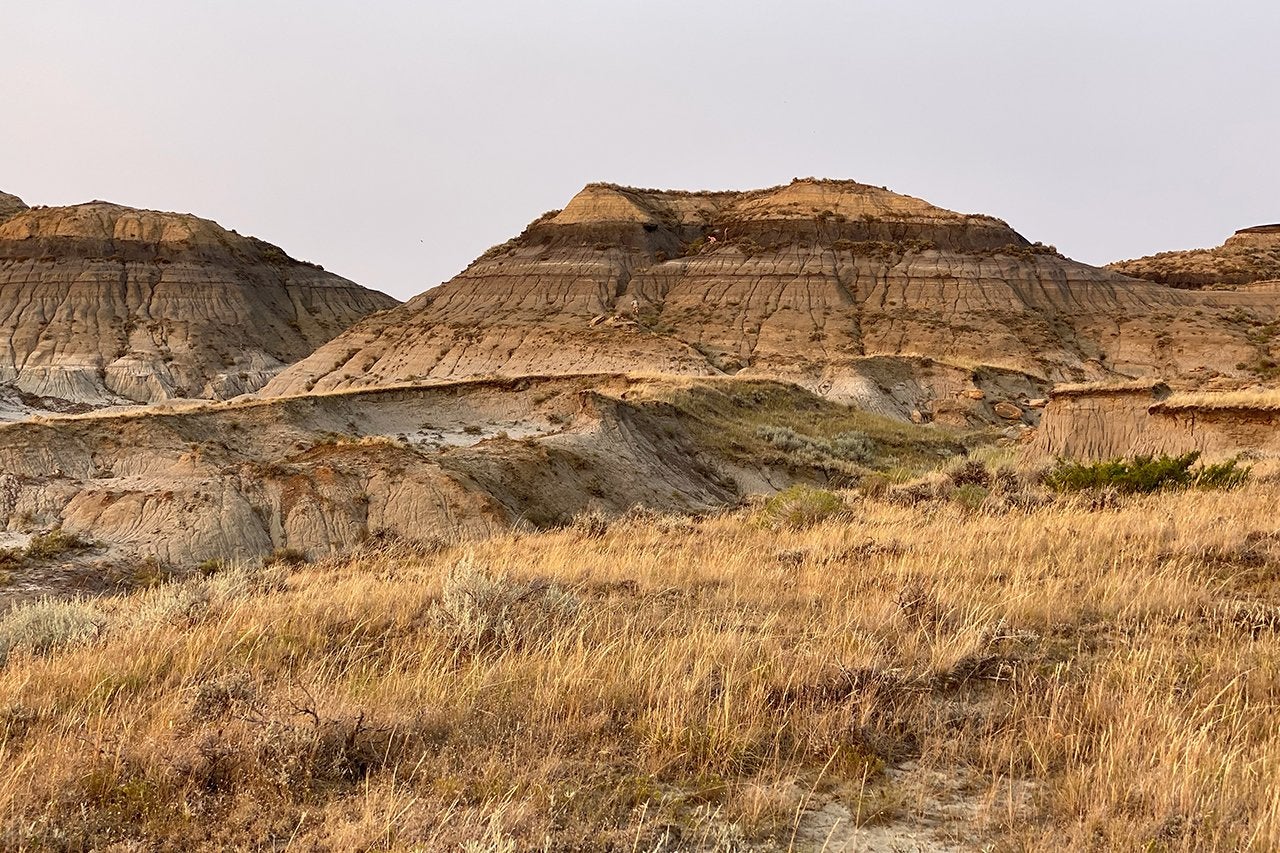A section in Montana that preserves the Cretaceous-Paleogene boundary that geology professors Teddy Them, Scott Harris and two College of Charleston students visited in 2020. Photo credit: Scott Harris
Sept. 1, 2023, will be a momentous day for the College – and, perhaps, the future of our planet. That’s when geology professor Teddy Them will begin using the College’s share of a prestigious $3 million collaborative research grant, which amounts to close to $290,000, to study mass extinction. He will start by mentoring two undergraduate students, junior Rachel Webster and sophomore Kami Beats, as they analyze geologic samples. He’ll then continue to work with students over the next five years as they do fieldwork in Colorado and North Dakota, generate geochemical data at a lab at Virginia Tech, present their research at international conferences and receive financial support.
The purpose of the grant from the National Science Foundation Frontier Research in Earth Sciences program is to make important contributions to understanding how life on Earth recovered after the end-Cretaceous mass extinction 66 million years ago, when about 75% of species on the planet went extinct. The event completely changed the trajectory of the evolutionary tree of life, leading ultimately to the formation of today’s extraordinary mammal diversity, including humans.
But the project isn’t just to learn about the evolution of many modern plants and animals; it should also provide valuable insights into the current biodiversity crisis facing the planet, as ancient extinctions can teach about the extinctions happening today.
And it will also show once again how the College punches above its weight.
“For the geology department, I hope that we can highlight the reality that smaller colleges have the necessary resources and ability to perform cutting-edge research in a predominantly undergraduate student setting,” Them says. “The experiences that our CofC students will have are commonly only for graduate students at larger research institutions, so I am extremely grateful to be able to provide these types of world-class opportunities.”
Tyler Larson, curator of vertebrate paleontology at the Denver Museum of Nature and Science, is leading the ambitious, five-year research project and the multidisciplinary team of 12 scientists at eight collaborating institutions: City University of New York Brooklyn College, the College of Charleston, Colorado College, Smithsonian National Museum of Natural History, University of British Columbia, University of Colorado Boulder, University of Oregon and University of Wyoming.
The two CofC geology students’ first task is to analyze geologic samples previously collected for this project for mercury concentrations, which may allow them to track the timing of the eruption of the Deccan Traps, a large volcanic province that was erupting during the mass extinction, as well as the moment an asteroid struck the planet, which is traditionally thought to have caused the extinction event.
“Over the last 15 years, there has been a contentious debate over which mechanism caused the mass extinction event, so our work should give insight into this,” Them says. “The fieldwork expeditions will take place in May–June over the next four years, so there will be multiple opportunities for our students to take part in the research.”




